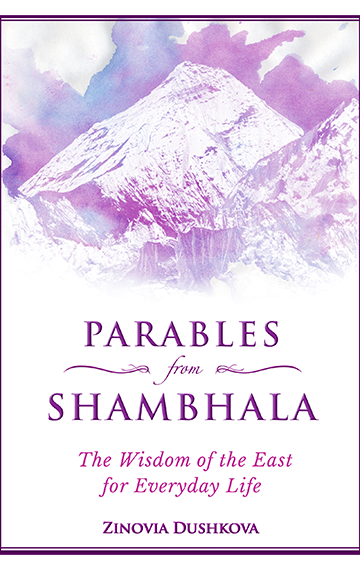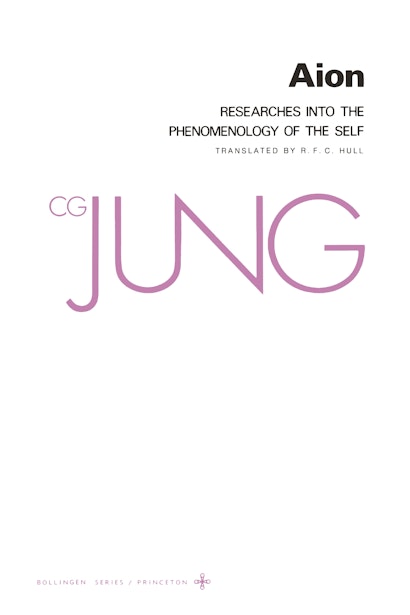Clean Up, Wake Up, Grow Up - Ken Wilber
By
Ken Wilber — 2019
YOU MIGHT ALSO LIKE
CLEAR ALL
BY TOPIC
BY TYPE
FILTER

TOPIC
- Identity (35)
- Dharma (32)
- Healing Approaches (32)
- Spiritual Awakening (28)
- Meditation (24)
- Shadow (24)
- Spiritual Life (22)
- Consciousness (18)
- Community Healing (16)
- Transformation (16)
- Self-Discovery (15)
- Awareness (14)
- Enlightenment (14)
- Black Well-Being (13)
- Mindfulness (13)
- Self-Realization (13)
- Self-Healing (12)
- Spiritual Direction (12)
- Diamond Approach (10)
- Jungian Analysis (10)
- Mind-Body Connection (10)
- Mindfulness Practices (10)
- Presence (10)
- BIPOC Well-Being (9)
- Christianity (9)
- Ego (9)
- Emotional and Mental Health (9)
- Self-Development (9)
- Social Justice (9)
- Spiritual Healing (9)
- Tibetan Buddhism (9)
- Women’s Well-Being (9)
- Comparing Belief Traditions (8)
- Connection with Nature (8)
- Female Empowerment (8)
- Human Potential (8)
- Spiritual Quest (8)
- The Divine (8)
- Happiness (7)
- Identity Shifts (7)
- Inner Life (7)
- Inner Peace (7)
- Love (7)
- Mindfulness Meditation (7)
- Science and Spirituality (7)
- Self-Actualization (7)
- Self-Reflection Practices (7)
- Wholeness (7)
- Activism/Service (6)
- Addiction Recovery (6)
- Integrative Medicine (6)
- Personal Development (6)
- Prayer (6)
- Racial Justice (6)
- Racism (6)
- Sacred Feminine (6)
- Spirituality and Politics (6)
- Communication Skills (5)
- Cross-Cultural Dynamics (5)
- Ecospirituality (5)
- Ego Transcendence (5)
- Energy Healing (5)
- God (5)
- Naturopathy (5)
- Perception (5)
- Racial Identity (5)
- Search for Purpose (5)
- Self-Care (5)
- Self-Love (5)
- Spirituality and Health (5)
- Suffering (5)
- Trauma Healing (5)
- Addiction (4)
- Aging (4)
- Altered States (4)
- Anxiety (4)
- Archetypes (4)
- Authenticity (4)
- Cancer (4)
- Chronic Health Conditions (4)
- Compassion (4)
- Family Dynamics (4)
- Functional Medicine (4)
- Goddess (4)
- Intention (4)
- Mysticism (4)
- Non-Duality (4)
- Racial Discrimination (4)
- Racial Healing (4)
- Self-Acceptance (4)
- Stress Management (4)
- Talk Therapy (4)
- Transpersonal Psychology (4)
- Zen Buddhism (4)
- Affirmations (3)
- Anima/Animus (3)
- Belonging (3)
- Conscious Evolution (3)
- Curiosity (3)
- Death and Dying (3)
- Depression (3)
- Embodiment (3)
- Finding Meaning (3)
- Global Challenges (3)
- Growth Mindset (3)
- Guided Meditation (3)
- Habit Formation (3)
- Habits of Mind (3)
- Journaling (3)
- Leadership (3)
- Letting Go (3)
- Life Challenges (3)
- Living with Illness (3)
- Loneliness (3)
- Moral Philosophy (3)
- Neoshamanism (3)
- Parenting (3)
- Philosophical Approaches (3)
- Psychology (3)
- Relationship Challenges (3)
- Relationship with Time (3)
- Self-Worth (3)
- The Unconscious (3)
- Values (3)
- Yoga (3)
- A Course in Miracles (2)
- Adaptability (2)
- Athlete Well-Being (2)
- Autism (2)
- Breathwork (2)
- Chanting (2)
- Child’s Trauma (2)
- Dark Night of the Soul (2)
- Disabled Well-Being (2)
- Ego Dissolution (2)
- Empowerment (2)
- Environmental Justice (2)
- Epigenetics (2)
- Facing Own Death (2)
- Faith (2)
- Family Acceptance (2)
- Fellowship and Community (2)
- Following Bliss (2)
- Forgiveness (2)
- Freedom (2)
- Homeopathy (2)
- Honoring Emotion (2)
- Hope (2)
- Illness and Injury (2)
- Immortality (2)
- Interdependence (2)
- Intuition (2)
- Joy (2)
- Judaism (2)
- Karma (2)
- Kindness (2)
- Kirtan Music (2)
- Latinx Well-Being (2)
- Life Force Energy (2)
- Manifestation (2)
- Mantra Meditation (2)
- Mental Health Challenges (2)
- Near-Death Experience (2)
- Othering (2)
- Personality Typing (2)
- Physical Health (2)
- Psychological Approaches (2)
- Relationship with Money (2)
- Religious Experience (2)
- Ritual (2)
- Romantic Relationships (2)
- Self-Expression (2)
- Setting Limits and Boundaries (2)
- Social Responsibility (2)
- Soul Mission (2)
- Speaking Your Truth (2)
- Spiritual Crisis (2)
- Storytelling (2)
- Subconscious (2)
- Transitions (2)
- Visualization (2)
- Well-Being (2)
- Young Adult Well-Being (2)
- Acceptance (1)
- Accepting Love (1)
- Alcohol Addiction (1)
- Alexander Technique (1)
- Anger (1)
- Autoimmune Disease (1)
- Ayurveda (1)
- Buddha Nature (1)
- Building Character (1)
- Building Culture (1)
- Child’s ADD/ADHD (1)
- Child’s Autism (1)
- Child’s Challenging Behavior (1)
- Children’s Well-Being (1)
- Christian Mysticism (1)
- Coming Out (1)
- Confidence (1)
- Courage (1)
- Criticism and Rejection (1)
- Cross-Cultural Parenting (1)
- Death or Loss of a Loved One (1)
- Death-Positive Movement (1)
- Decision Making (1)
- Diet and Nutrition (1)
- Dream Analysis (1)
- Endurance (1)
- Entrepreneurship (1)
- Fate (1)
- Fatherhood (1)
- Focus (1)
- Forest Bathing (1)
- Friendship (1)
- Gender Identity (1)
- Generational Healing (1)
- Generosity (1)
- Genetics (1)
- Goal Setting (1)
- Grace (1)
- Gratitude (1)
- Grit (1)
- Guided Imagery (1)
- Handling a Child’s Illness (1)
- Handling a Loved One’s Illness (1)
- Healthy Eating (1)
- Hero’s Journey (1)
- Higher Calling (1)
- Hinduism (1)
- Holotropic Breathwork (1)
- Imagination and Creativity (1)
- Immigration and Assimilation (1)
- Incarceration (1)
- Inflammation (1)
- Inner Strengths (1)
- Insight (Vipassana) Meditation (1)
- Inspiration (1)
- Integrity (1)
- Intergenerational Trauma (1)
- Intimacy (1)
- Islam (1)
- Jewish Renewal (1)
- Kabbalah (1)
- Leaving a Religion (1)
- LGBTQIA Sexuality (1)
- LGBTQIA Well-Being (1)
- Lifestyle Medicine (1)
- Lovingkindness (1)
- Lucid Dreaming (1)
- Memoir (1)
- Memory (1)
- Men’s Well-Being (1)
- Midlife Crisis (1)
- Military to Civilian Re-entry (1)
- Mythology (1)
- Narcissism (1)
- Neopaganism (1)
- Neurodiversity (1)
- Neuroscience (1)
- Nonbinary Well-Being (1)
- Nonviolence (1)
- Offering Support to Others (1)
- Patience (1)
- Poetry (1)
- Positive Psychology (1)
- Positive Self-Talk (1)
- Positive Thinking (1)
- Productivity (1)
- Psychedelic Journey (1)
- Psychedelic-Assisted Therapy (1)
- Quantum Physics (1)
- Race and Gender (1)
- Raising Nonbinary Children (1)
- Rebirth (1)
- Reiki (1)
- Retirement (1)
- Self-Compassion (1)
- Self-Esteem (1)
- Self-Limiting Beliefs (1)
- Self-Mastery (1)
- Self-Reckoning (1)
- Sexual Assault or Abuse (1)
- Sleep (1)
- Social Presence (1)
- Somatic Practices (1)
- Sufism (1)
- Synchronicity (1)
- Tarot (1)
- Traditional Chinese Medicine (1)
- Transgender Well-Being (1)
- Trauma (1)
- Trust (1)
- Unity (1)
- Veteran Well-Being (1)
- Vulnerability (1)
- Western Astrology (1)
- Whiteness (1)
- Wicca (1)
- Witch (1)
- Witchcraft (1)
- Work-Life Balance (1)
- Zen Meditation (1)
FILTER

TEACHER
- Carl Jung (5)
- Chögyam Trungpa (5)
- The Dalai Lama (5)
- C. S. Lewis (4)
- Connie Zweig (4)
- Bernie S. Siegel (3)
- David R. Hawkins (3)
- Howard Thurman (3)
- Jack Kornfield (3)
- John Welwood (3)
- Karen Casey (3)
- Luisah Teish (3)
- M. Scott Peck (3)
- Mark Epstein (3)
- Matt Kahn (3)
- Pierre Teilhard de Chardin (3)
- Robert A. Johnson (3)
- Wayne Dyer (3)
- Biet Simkin (2)
- Carolyn Baker (2)
- Daniel Goleman (2)
- David Steindl-Rast (2)
- Deepak Chopra (2)
- Diane Stein (2)
- Harriet Lerner (2)
- Jean Shinoda Bolen (2)
- Jeff Brown (2)
- Jeff Foster (2)
- john a. powell (2)
- John Perry (2)
- Karen Johnson (2)
- Krishna Das (2)
- Lama Surya Das (2)
- Larry Dossey (2)
- Louise Hay (2)
- Marianne Williamson (2)
- Moses (2)
- Pema Chödrön (2)
- Queen Afua (2)
- Ram Dass (2)
- Rami Shapiro (2)
- Robert Bly (2)
- Roberto Assagioli (2)
- Swami Mukundananda (2)
- Zinovia Dushkova (2)
- Adi Da Samraj (1)
- Adyashanti (1)
- Alan Watts (1)
- Alice Walker (1)
- Amit Goswami (1)
- Andrew Harvey (1)
- Andrew Solomon (1)
- Andrew Weil (1)
- angel Kyodo williams (1)
- Anthony de Mello (1)
- Arianna Huffington (1)
- Brian Weiss (1)
- Bruce Lipton (1)
- Charles Tart (1)
- Claudio Naranjo (1)
- Dan Harris (1)
- Dan Millman (1)
- Daniel J. Siegel (1)
- Deena Metzger (1)
- don Miguel Ruiz (1)
- Eckhart Tolle (1)
- Edgar Cayce (1)
- Elisa Shankle (1)
- Elizabeth Lesser (1)
- Elson Haas (1)
- Ervin László (1)
- Evelyn Underhill (1)
- Frans Stiene (1)
- Gabor Maté (1)
- Gabrielle Bernstein (1)
- Hank Wesselman (1)
- HeatherAsh Amara (1)
- Huston Smith (1)
- Idries Shah (1)
- Iyanla Vanzant (1)
- Jacqui Lewis (1)
- Joan Chittister (1)
- Joan Halifax (1)
- Joanna Macy (1)
- John C. Parkin (1)
- Jon Kabat-Zinn (1)
- Kate Johnson (1)
- Leah Guy (1)
- Lissa Rankin (1)
- Marc Ian Barasch (1)
- Margot Adler (1)
- Marion Woodman (1)
- Mark Manson (1)
- Martin Seligman (1)
- Matthew Fox (1)
- Michael Bernard Beckwith (1)
- Mirabai Starr (1)
- Noah Levine (1)
- Norman Fischer (1)
- Oriah Mountain Dreamer (1)
- Paramahansa Yogananda (1)
- Parker J. Palmer (1)
- Peter Russell (1)
- Philip Goldberg (1)
- Piero Ferrucci (1)
- Ralph De La Rosa (1)
- Ralph Metzner (1)
- Reginald Ray (1)
- Rhonda Magee (1)
- Richard Davidson (1)
- Robert Augustus Masters (1)
- Robert Thurman (1)
- Roger Walsh (1)
- Rudolph Ballentine (1)
- Rupert Sheldrake (1)
- Ruth King (1)
- Sally Kempton (1)
- Scott Edelstein (1)
- Sigmund Freud (1)
- Sonia Choquette (1)
- Stanislav Grof (1)
- Stephanie Rose Bird (1)
- Susan Piver (1)
- Thich Nhat Hanh (1)
- Thomas Merton (1)
- Thomas Moore (1)
- Will Cole (1)
- Yongey Mingyur Rinpoche (1)
- Z’ev ben Shimon Halevi (1)
- Zalman Schachter-Shalomi (1)





 Only awareness of your shadow qualities can help you to find an appropriate place for your unredeemed darkness and thereby create a more satisfying experience.
Only awareness of your shadow qualities can help you to find an appropriate place for your unredeemed darkness and thereby create a more satisfying experience.




